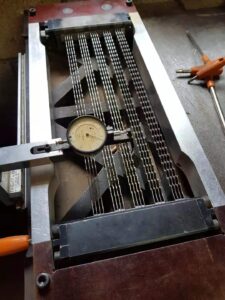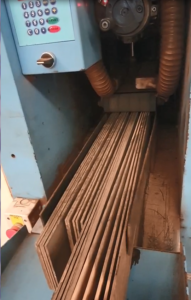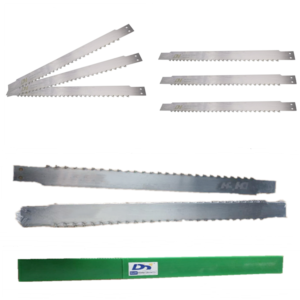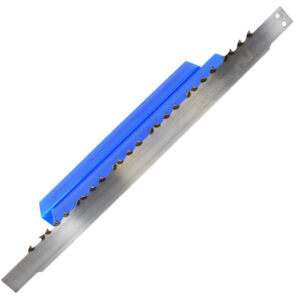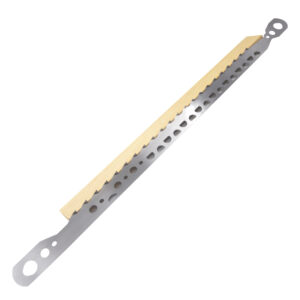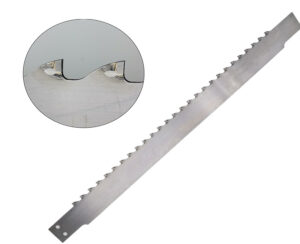Choosing between a Carbide Frame Saw Blade and a stellite frame saw blade depends on your material and cutting requirements. Carbide blades excel in durability and precision, while stellite blades offer flexibility and resistance to heat. Each blade type suits specific tasks. Selecting the right one ensures optimal performance and cost-efficiency for your projects.
Key Features of Carbide Frame Saw Blades

Carbide frame saw blades are engineered for precision and durability. These blades feature tungsten carbide tips, which provide exceptional hardness and resistance to wear. The design ensures consistent cutting performance, even under demanding conditions. You will find that carbide blades maintain their sharpness longer than many alternatives, reducing the need for frequent replacements. Additionally, their ability to withstand high temperatures makes them ideal for heavy-duty applications.
Advantages of Carbide Blades
When you choose a carbide frame saw blade, you benefit from its superior longevity and cutting accuracy. These blades excel in maintaining sharp edges, which translates to smoother cuts and reduced material wastage. Their heat resistance allows them to perform efficiently in high-speed operations without losing effectiveness. Furthermore, the durability of carbide blades minimizes downtime, as you won’t need to replace or sharpen them as often. This makes them a cost-effective choice for long-term use.
Common Uses of Carbide Frame Saw Blades
Carbide frame saw blades are widely used in industries requiring precision and efficiency. They are particularly effective for cutting hardwoods, engineered wood, and abrasive materials. In manufacturing, these blades are often employed in furniture production and flooring applications.
Key Features of Stellite Frame Saw Blades

Stellite frame saw blades are crafted using a cobalt-chromium alloy, which gives them exceptional toughness and resistance to wear. These blades are designed to handle high-speed cutting tasks while maintaining their sharpness over extended periods. Unlike carbide blades, stellite blades are self-sharpening to some extent, which reduces the need for frequent maintenance. Their ability to resist heat and corrosion makes them a reliable choice for demanding environments. You’ll also notice that stellite blades are lighter than carbide alternatives, which can improve handling and reduce strain on machinery.
Advantages of Stellite Blades
Stellite blades offer several advantages that make them a preferred choice for specific applications. Their heat resistance ensures consistent performance even during prolonged use. The self-sharpening property minimizes downtime, allowing you to focus on productivity rather than maintenance. These blades are also highly versatile, capable of cutting through a wide range of materials, including softwoods, hardwoods, and even some metals.
Common Uses of Stellite Frame Saw Blades
Stellite frame saw blades are widely used in industries where versatility and durability are essential. They are ideal for sawmills, where they handle both softwoods and hardwoods with ease. These blades are also popular in the metalworking industry for cutting non-ferrous metals.
Key Comparison Factors
Durability and Wear Resistance
When comparing durability, carbide frame saw blades outperform stellite blades. Tungsten carbide tips provide exceptional hardness, resulting in lower wear rates and a longer lifespan. In contrast, stellite blades, made from cobalt-chromium alloys, exhibit higher wear rates and shorter lifespans.
Stellite blades, however, excel in environments requiring corrosion resistance and high-temperature performance. For example, Stellite 3 offers excellent metal-to-metal wear resistance, while Stellite 20 is ideal for abrasive and chemical-resistant applications.
Cutting Performance and Efficiency
Carbide frame saw blades deliver superior cutting performance. Their sharp edges ensure smoother cuts and higher precision, making them ideal for hardwoods and engineered wood. Stellite blades, while versatile, may produce slightly rougher cuts. However, their ability to handle both softwoods and hardwoods efficiently makes them a practical choice for sawmills and general-purpose applications.
Maintenance and Sharpening
Carbide blades require professional sharpening tools, which can increase maintenance costs. However, their durability reduces the frequency of sharpening. Stellite blades, on the other hand, are easier to sharpen and maintain. Their self-sharpening properties further minimize downtime, allowing you to focus on productivity.
Suitability for Different Materials and Applications
Carbide frame saw blades are best suited for precision tasks involving hardwoods, engineered wood, and abrasive materials. Their heat resistance makes them ideal for high-speed operations. Stellite blades, with their versatility, are better for cutting softwoods, hardwoods, and non-ferrous metals. Their corrosion resistance also makes them suitable for harsh environments, such as sawmills and metalworking industries.
Tip: Choose carbide blades for precision and durability. Opt for stellite blades when versatility and affordability are priorities.
How to Choose the Right Blade Based on Your Needs
Factors to Consider When Choosing a Blade
Selecting the right frame saw blade involves evaluating several critical factors. Each factor plays a role in determining the blade’s performance and suitability for your specific cutting needs.
1-Blade Material
The material of the blade affects its durability and cutting efficiency based on the material being cut.
2-Tooth Count (TPI)
The number of teeth per inch influences the smoothness of the cut; higher TPI generally results in smoother cuts.
3-Desired Cut Smoothness
The level of finish required for the cut can dictate the choice of blade, with smoother cuts needing higher TPI.
Additionally, you should assess the blade’s compatibility with the material you plan to cut. For example, carbide frame saw blades excel in cutting hardwoods and engineered wood, while stellite blades are better suited for softwoods and non-ferrous metals. Blade design and segment configuration also impact cutting efficiency, so choosing a robust design tailored to your application is essential.
Always match the blade’s specifications to your project’s requirements to achieve optimal results.
